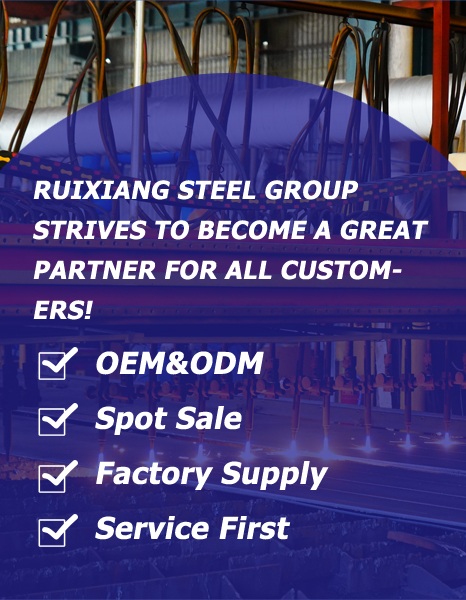Basic Principles of Steel Plate Girder Design for Bridge and Building Support
 Click:195Edit: Admin
Click:195Edit: Admin Time:2025-10-07 19:21:41
Time:2025-10-07 19:21:41
Basic Principles of Steel Plate Girder Design for Bridge and Building Support
Steel plate girders represent a fundamental structural element in both bridge construction and building support systems, offering exceptional strength-to-weight ratios and design flexibility. These fabricated members consist of vertical web plates welded between horizontal flange plates, creating efficient I-shaped sections that can span significant distances while supporting substantial loads. Understanding the basic design principles enables engineers to create safe, efficient, and cost-effective structural solutions. As a trusted steel supplier, Ruixiang Steel provides high-quality plate materials essential for fabricating these critical structural components.
Fundamental Components and Configuration
Plate girders comprise three primary elements:
Web plate: The vertical central element that resists shear forces
Flange plates: Horizontal elements at the top and bottom that resist bending moments
Stiffeners: Vertical or horizontal plates that prevent web buckling
The arrangement of these components creates an efficient structural system where material is concentrated in the flanges where bending stresses are highest, while the web provides the necessary depth to develop moment capacity with minimal material.
Key Design Considerations
Proportioning and Depth-to-Span Ratios
Optimal girder proportions balance structural efficiency with practical considerations:
Bridge girders: Typically feature depth-to-span ratios between 1:10 to 1:15
Building girders: Generally utilize ratios from 1:15 to 1:20
Web thickness: Designed to resist shear while maintaining slenderness limits
Flange width and thickness: Proportionate to develop required moment capacity
Flange Design for Moment Resistance
Flanges constitute the primary bending resistance elements:
Area calculation: Based on required moment capacity divided by allowable stress and girder depth
Width-to-thickness ratios: Limited to prevent local buckling
Splice locations: Strategically placed away from maximum moment regions
Material selection: Often higher strength steel in flanges than web for optimization
Web Design for Shear Resistance
The web plate primarily resists vertical shear forces:
Slenderness considerations: Height-to-thickness ratios controlled to prevent buckling
Shear capacity calculations: Based on web area and material shear strength
Buckling prevention: Transverse stiffeners often required for deeper girders
Opening provisions: Properly reinforced when service penetrations are necessary
Stiffener Requirements
Stiffeners enhance stability and prevent premature failure:
Bearing stiffeners: Provided at support points and concentrated load locations
Intermediate stiffeners: Spaced to control web buckling under shear
Longitudinal stiffeners: Sometimes used in very deep girders to control flexural buckling
Fabrication and Connection Details
Practical considerations significantly influence design:
Splice design: Full-penetration welds typically required for flange and web splices
Cross-frame connections: Adequate for lateral load transfer in bridge systems
Camber provision: Often incorporated to compensate for dead load deflection
Accessibility: Maintenance and inspection requirements considered in detailing
Ruixiang Steel's Material Contribution
Our company supports plate girder fabrication through:
Quality plate production: Supplying ASTM A36, A572 Grade 50, and other structural steels
Precise dimensional control: Ensuring consistent thickness and flatness
Certified material properties: Providing mill certificates with mechanical properties
Technical data support: Assisting with material selection and specification compliance
Conclusion
The design of steel plate girders represents a balance between theoretical efficiency and practical constructability. By properly proportioning components, addressing stability concerns, and selecting appropriate materials, engineers can create girders that efficiently span long distances while supporting significant loads. Ruixiang Steel supports these engineering achievements by supplying the quality plate materials that form the foundation of these essential structural systems, contributing to the development of safe and durable infrastructure worldwide.
 Click:195Edit: Admin
Click:195Edit: Admin Time:2025-10-07 19:21:41
Time:2025-10-07 19:21:41

